chillies have always been an important ingredient in Indian cuisine, and their cultivation provides a good living for many farmers in the nation. Farmers are looking to hybrid varieties to increase yield and revenue as demand for chillies rises. Hybrid chillies result from crossbreeding two or more chillies, resulting in plants with desirable characteristics such as high yield, disease resistance, and improved fruit quality.
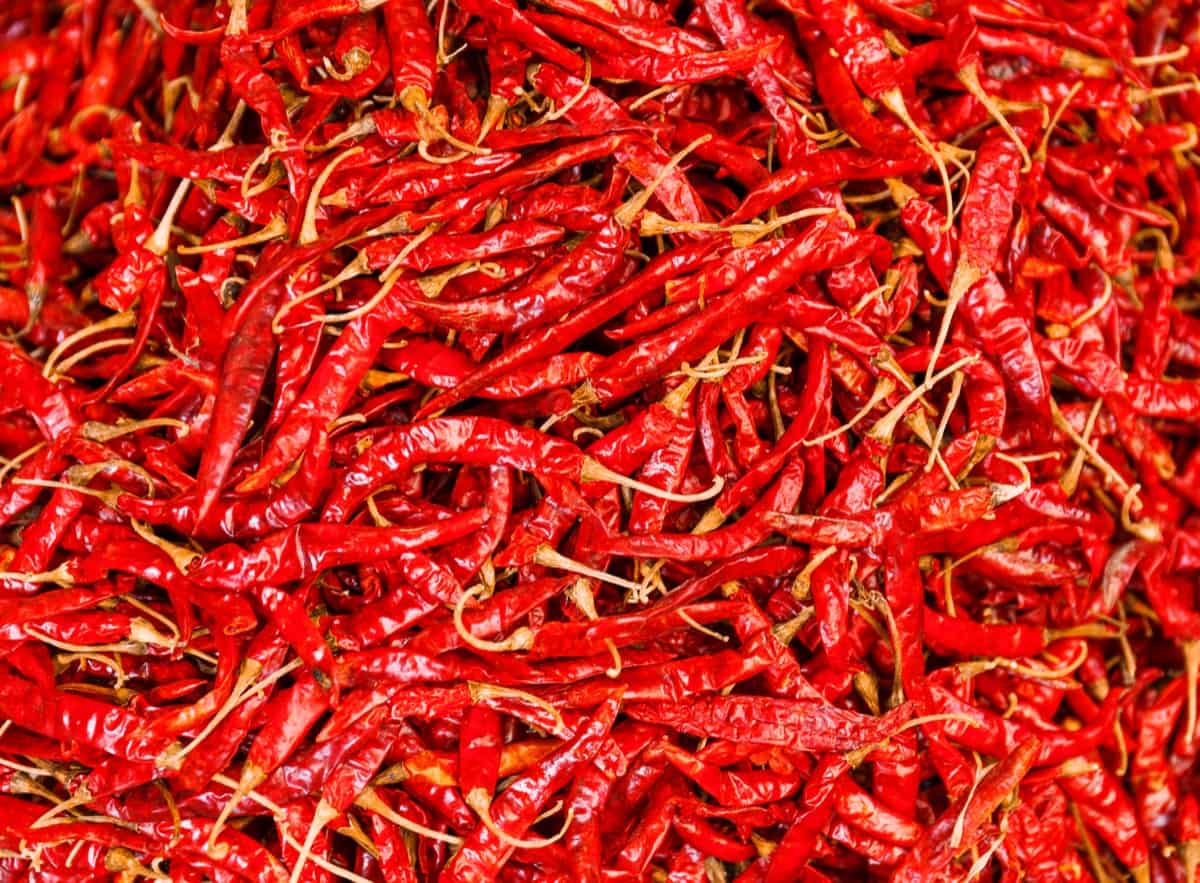
This blog post aims to look at the yield of hybrid chillies per acre in India, particularly red and green varieties, and the significance of their cultivation. India is one of the world’s largest chilli producers, and demand for chillies, both domestically and abroad, is increasing. In this context, hybrid chilli cultivation can assist farmers in increasing yield and profitability while meeting the market’s rising demand for chillies.
This blog article will inform farmers and users about hybrid chilli yield, factors influencing yield, and the best cultivation methods. Readers will have a greater understanding of the benefits of hybrid chilli cultivation and how to maximize yield per acre by the end of this post.
Hybrid Chilli Yield Red and Green Per Acre in India
Market Demand for Hybrid Chilli Yield
The market for hybrid chilli seeds has gradually increased as demand for chillies in India and worldwide has increased. Hybrid seeds have become popular among producers due to their high yield potential, disease resistance, and higher fruit quality. The global market for hybrid seeds was valued at USD 21.5 billion in 2020 and is projected to reach USD 34.9 billion by 2026, expanding at a CAGR of 8.1% during the period forecast. (2021-2026). The demand for high-yielding and disease-resistant cereals is expected to drive significant growth in the hybrid seeds market in the Asia-Pacific region, including India.
India Hybrid Chilli Seeds Market
The India hybrid seeds market was worth USD 1.09 billion in 2020 and is projected to reach USD 2.37 billion by 2026, expanding at a CAGR of 12.5% during the forecast period. In India, the demand for hybrid seeds is primarily driven by the need to increase agricultural productivity and satisfy the country’s rising food demand. Several domestic and international competitors offer a variety of hybrid chilli varieties, making hybrid chilli seeds a significant contributor to the Indian hybrid seeds market.
In case you missed it: Management of Black Thrips in Chilli Peppers: Symptoms, Treatment, Chemical, Biological, Natural, and Organic Control
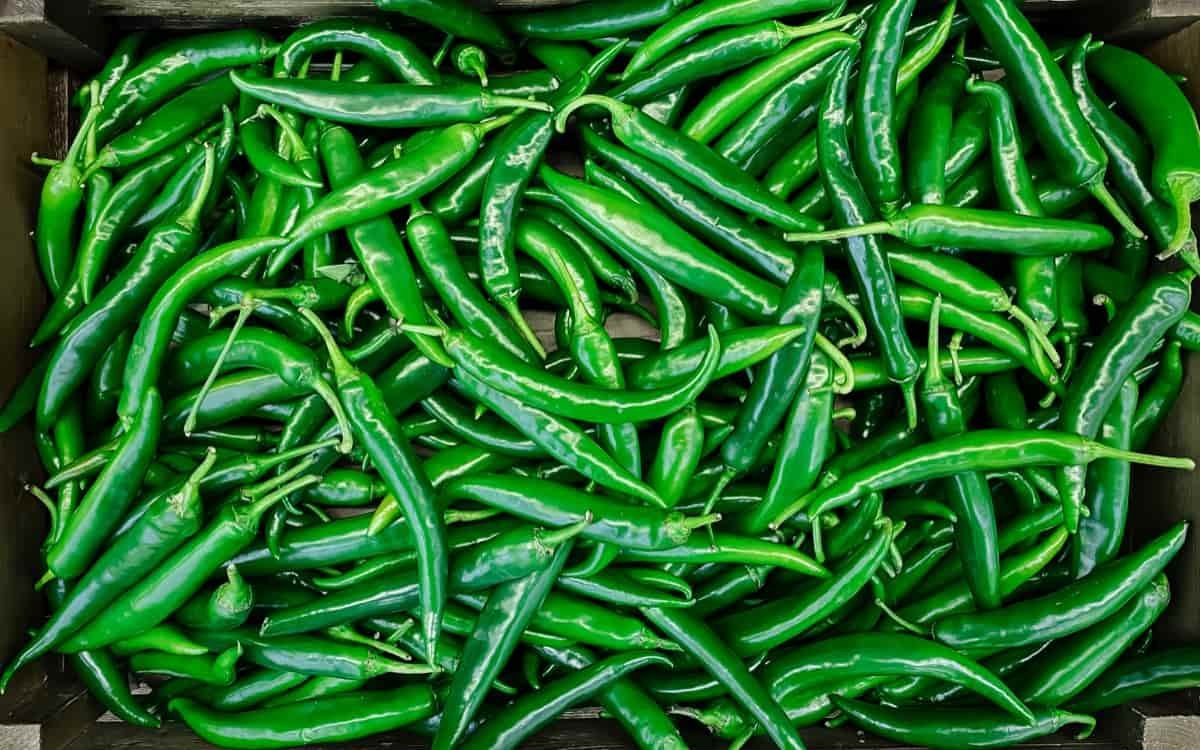
Bhut Jolokia, Teja, Byadgi, and Naga Jolokia are popular hybrid chilli varieties. The demand for hybrid chilli seeds in India is expected to continue to increase due to several factors, including the rising demand for chillies in domestic and international markets, the need to increase agricultural productivity, and the growing awareness among farmers of the benefits of hybrid seeds.
Hybrid Chilli Varieties for Red Chillies
Arka Yashasvi (H 8) chilli plant produces good yields and resists Chilli Leaf Curl Virus. (ChLCV). The tall shrub spreads. Arka Yashasvi produces pendent chiles 8-10 cm long and 1.2 cm wide. They start green and turn rich red. chillies start smooth but develop mild wrinkles. This chilli yields 30-35q dry chillies per acre.
Arka Meghana: This hybrid chilli variety was developed by the Indian Council of Agricultural Research (ICAR). It has high yield potential and is resistant to various diseases. The chillies are long and dark red, with a high pungency level.
Manjeet Chilli: Developed by the Punjab Agricultural University, this hybrid chilli variety is highly resistant to diseases and pests. The chillies are medium-sized and turn bright red when they mature. They have a medium pungency level and are suitable for fresh consumption and drying.
Indira Resistant Hybrid: Developed by the Tamil Nadu Agricultural University, this hybrid chilli variety is highly resistant to the chilli leaf curl virus. The chillies are long and slender, with a bright red color and a high pungency level.
Kashi Anmol: Developed by the Indian Institute of Vegetable Research, this hybrid chilli variety has a high yield potential and is resistant to various diseases. The chillies are medium-sized and turn bright red when they mature. They have a medium pungency level and are suitable for fresh consumption and drying.
Sudha: Developed by the private seed company Syngenta, this hybrid chilli variety has high yield potential and is resistant to various diseases. The chillies are medium-sized and turn bright red when they mature. They have a medium pungency level and are suitable for fresh consumption and drying.
Hybrid Chilli Varieties for Green Chillies
Arka Gagan: it is produces many green chillies, making them great for the market. The medium-sized plant spreads. The erect, solitary chiles are 8-9 cm long and 1-1.1 cm wide. They start green and turn red. chillies change with smooth but wrinkled skin. This chilli is chilli leaf curl virus-tolerant and yields 80-100q green peppers per acre.
Arka Tanvi: It is a high-yielding chilli plant for fresh and dry chilli markets. The tall shrub spreads. Arka Tanvi chiles are pendent and 9-10 cm long, and 1 cm wide. They start green and grow to deep red. chillies’ smooth skin wrinkles with age. This chillies is tolerant to chillies leaf curl virus and yields 80-100q green chiles and 30-35q dry chillies per acre.
In case you missed it: Chilli Fertilizer Schedule: How and When to Apply Organically, Inorganically for More Yields
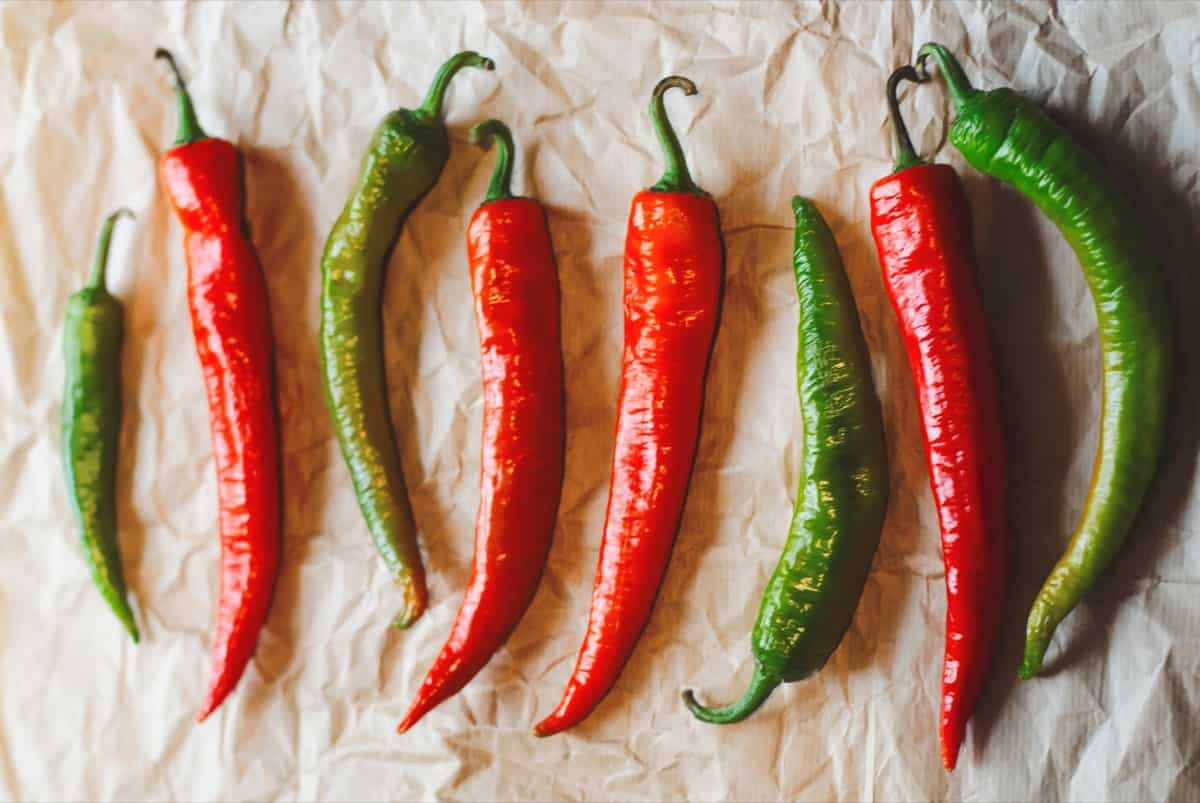
Arka Saanvi: It is a high-yielding chilli plant ideal for green and dry chilli markets. The medium-sized shrub spreads. Arka Saanvi chiles are pendent and 7-8 cm long, and 1-1.2 cm wide. They start green and grow to red. Chillies start smooth but develop mild wrinkles. This chilli is chilli leaf curl virus-tolerant and yields 30-35q dry chiles per acre.
Arka Tejasvi: It is a high-yielding F1 hybrid chile for green and dry markets. The medium-tall, spreading plants have pendent fruits that are firm, pungent, and rich red when mature. Green grapes are smooth and mature to medium wrinkled. This chilli leaf curl virus-tolerant strain yields 30-35q dry chilli per acre. It’s advised for Karnataka’s eastern dry zone.
Arka Khyati: It is a tall, spreading F1 hybrid chile, yields well. The silky, wrinkled fruits are light green when dried and red when mature. This low-pungent cucumber mosaic virus-tolerant variety can give 80-100q green and 25-28q dry chilli per acre.
Arka Sweta: It is a medium-tall, spreading F1 hybrid chile, yields well. Smooth and low-pungent, the fruits are light green and turn red when mature. This cucumber mosaic virus-tolerant strain yields 80-100q green and 20-25q dry chilli per acre.
Arka Lohit: This hybrid variety developed by the Indian Institute of Horticultural Research (IIHR) resists pests and diseases. It produces long, slender green chilies ideal for making pickles and chutneys.
Pusa Jwala: This popular hybrid variety was developed by the Indian Agricultural Research Institute (IARI). It produces thin, long green chillies ideal for cooking and making pickles. This variety is also known for its high yield and resistance to pests and diseases.
Indira Green: This hybrid variety is developed by the Indian Institute of Vegetable Research (IIVR). It produces medium-sized green chillies suitable for fresh consumption and pickling. This variety is also resistant to pests and diseases.
Swarna Green: The private seed company developed this hybrid chilli variety. It produces dark green, slightly curved chillies for fresh consumption, pickling, and cooking. This variety is also resistant to pests and diseases.
Shalimar Green: The private seed company Namdhari Seeds developed this hybrid chilli variety. It produces long, slender green chillies ideal for making pickles and chutneys. This variety is also resistant to pests and diseases.
Hi-Mark Green: The private seed company Sakata Seeds developed this hybrid chilli variety. It produces thick, fleshy green chillies suitable for cooking and making pickles. This variety is also resistant to pests and diseases.
Navrang Green: The private seed company Seminis Seeds developed this hybrid chilli variety. It produces green chillies with sweet and spicy flavors, making it suitable for fresh consumption and pickling. This variety is also resistant to pests and diseases.
In case you missed it: Leaf Curl Virus in Chilli Crop: Symptoms, Causes, Control, and Treatment
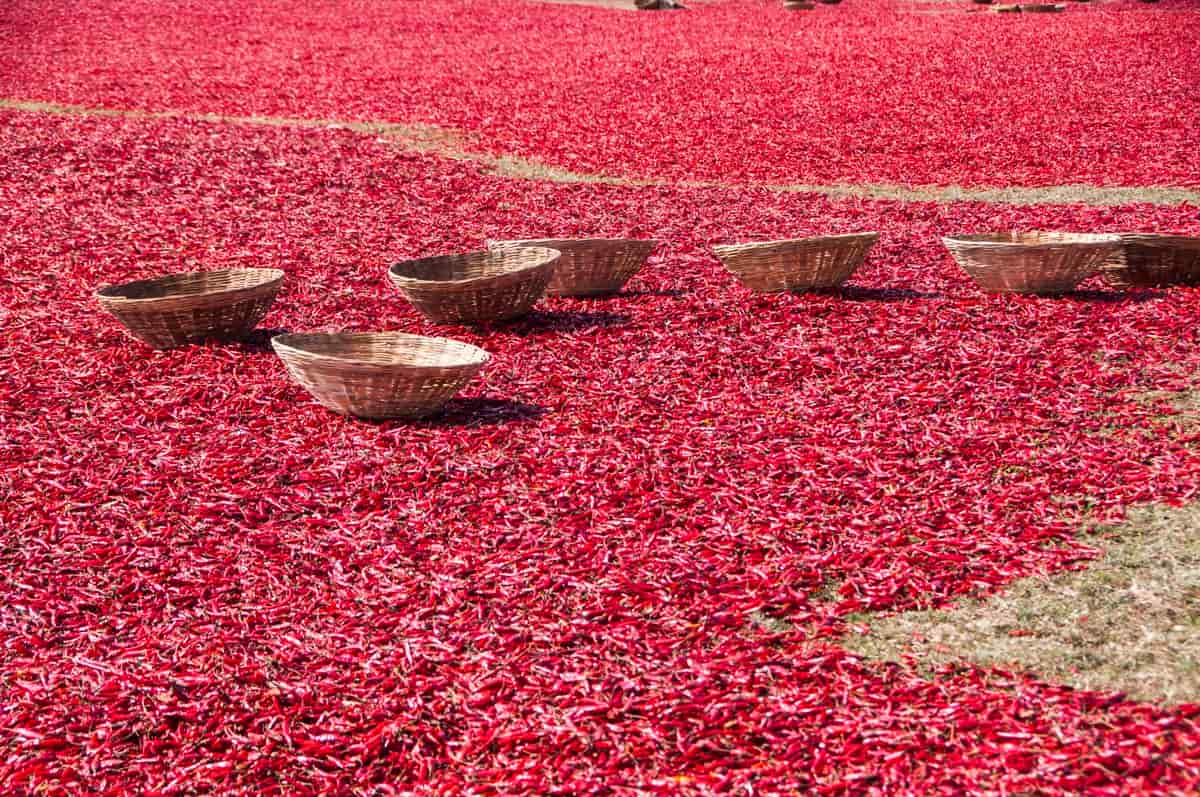
Ideal Climatic Conditions Required for Hybrid Chilli Cultivation
Chilli is a tropical and sub-tropical plant that requires a warm and humid climate during growth and a dry climate during fruit maturity. The ideal temperature range for chilli growth is between 20⁰C and 25⁰C, and temperatures of 37⁰C or higher can negatively affect crop development. The humidity level should be relatively high during growth but low during fruit maturity. Heavy rainfall can cause the plant to rot, and low moisture levels during fruiting can cause flowers and fruits to drop off.
Soil is Suitable, and the pH Requirement for Hybrid Chilli Cultivation
Chilli plants thrive in well-drained, fertile soils rich in organic matter. Sandy loam and loamy soils with a pH range of 6 to 7.5 are ideal for chilli cultivation. The soil should also have an excellent water-holding capacity, as chilli plants require consistent moisture levels. Additionally, the soil should be free from salinity, as high salt levels can adversely affect the growth and development of the plant. Proper soil preparation, such as plowing and leveling, and the addition of compost or manure can help to ensure optimal soil conditions for chilli farming.
Hybrid Chilli Growing Season
Chilli can be grown both as Kharif and Rabi crops, and the sowing months are May to June for the Kharif crop and September to October for the Rabi crop. The water required for chilli cultivation varies depending on climatic conditions and soil type. Disease-free, good-quality seeds should be chosen at the time of cultivation.
Popular Chilli Varieties
Some popular chilli varieties are Jwala, Kanthari, Kashmiri Chilli, Bhagya Lakshmi, TNAU Hybrid Chilli Co1, KI, and PLR1. Soil sterilization should be carried out to keep plant diseases in check. For organic farming, the soil should be treated with Azotobacter or Azospirillum, while for conventional farming, soil sterilization is done using formalin or methyl bromide.
Hybrid Chilli Disease Management
Various diseases can affect chillies, including anthracnose, fruit rot, dieback, bacterial wilt, mosaic diseases, powdery mildew, and leaf spot. Spraying Trichoderma and Pseudomonas species can help prevent the spread of these diseases.
Hybrid Chilli Pest Management
Pests such as pod borers, thrips, grubs, nematodes, aphids, and mites can harm chilli plants. Using well-rotted manure during farm yard manure application can help prevent pest attacks. Growing onions with chillies can also be beneficial in avoiding pest attacks.
Chilli Production
Fresh chilli yields vary from 30-40 quintals per acre, while dry chilli yields range from 7.5 to 10 quintals per acre. 25-35 Kg of dried chilli can be obtained from 100 Kg of fresh chilli.
In case you missed it: Sucking Pests in Chilli Crop: Symptoms, Causes, Control, and Treatment
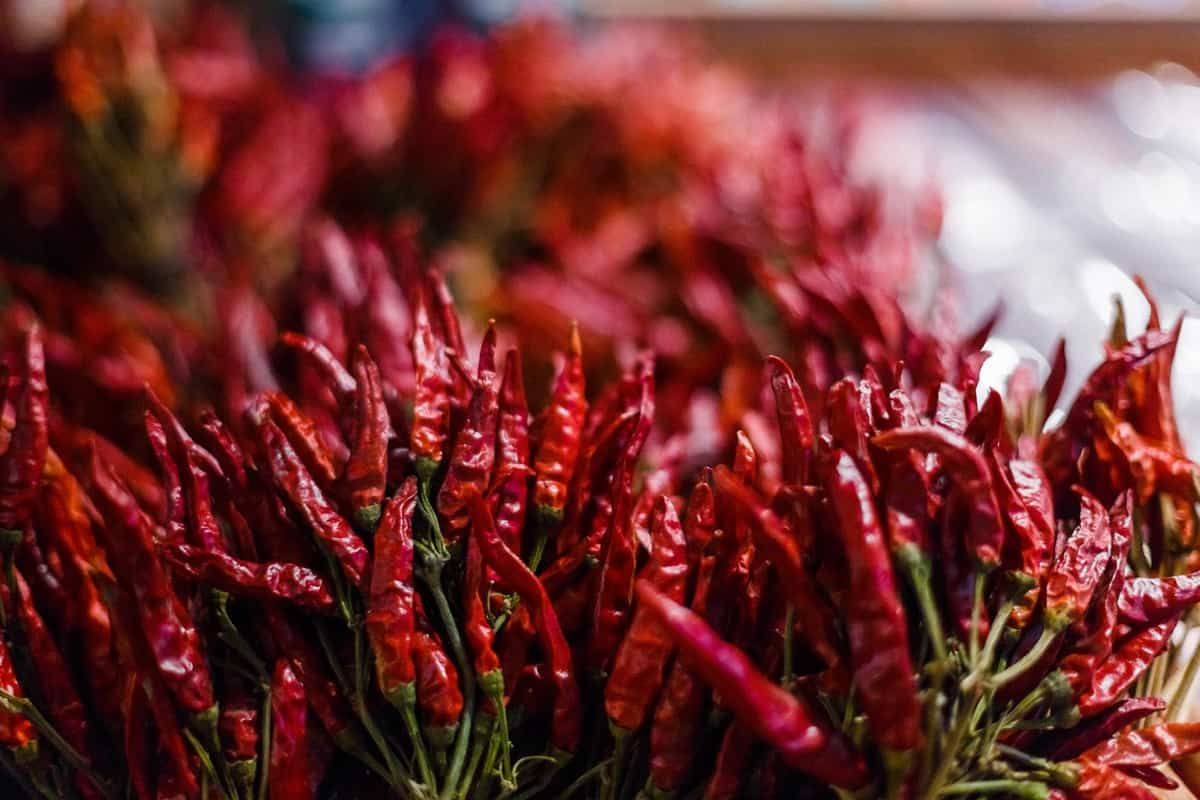
Harvesting
Harvesting of chilli depends on the intended use of the chillies. For making powdered and dry chilli, fruits are harvested when the chilli turns dark red in color. Green chillies are plucked for preparing pickles. Plucking should be done regularly, as keeping the chillies on the plant for too long can cause color fading and wrinkles. Green chillies can be plucked 8-10 times, while ripe ones can be plucked 5-6 times.
Factors Affecting Hybrid Chilli Yield
Density
Plant spacing affects yield. Too close plants compete for nutrients and water, reducing yield, while too far apart plants may need to use resources properly. Hybrid pepper yield depends on fertilization. Under- or over-fertilization can stunt growth and reduce fruit output. Soil test results and hybrid chilli variety nitrogen needs should determine fertilizer type and amount.
Sunlight
Chilli plants need sunlight for optimum growth and yield. Low light reduces metabolism and yield. Based on the variety, chilli plants need at least 6 hours of direct sunlight daily. Harvest timing and method impact hybrid chilli yield. Harvesting too early or too late can result in underdeveloped or overripe crops. Sharp tools to avoid plant and fruit damage can optimize yield.
Genetics
Hybrid pepper yields vary by genetics. Some hybrids are bred for high yield, while others rely on disease resistance or fruit quality.
Yield Potential for Hybrid Chilli Cultivation
Hybrid chilli varieties are bred to be high-yielding and disease-resistant. They are also selected for desirable fruit characteristics such as size, shape, and color. Hybrid varieties have a genetic advantage over traditional open-pollinated varieties because they result from cross-pollination between two parent plants with desirable traits.
Cross-pollinating two parent plants with desirable traits produces high-yielding, disease-resistant hybrid chilli types. Management is needed to attain 50-60 tonnes per hectare yields. Drip irrigation and mulching can preserve water in optimal growing conditions like rich soil, good drainage, and enough water. Biological control agents and integrated pest management can control pests and avoid disease.
In case you missed it: How to Control Western Flower Thrips in Chilli Crop: Identification, Fact Sheet, Chemical and Biological Management
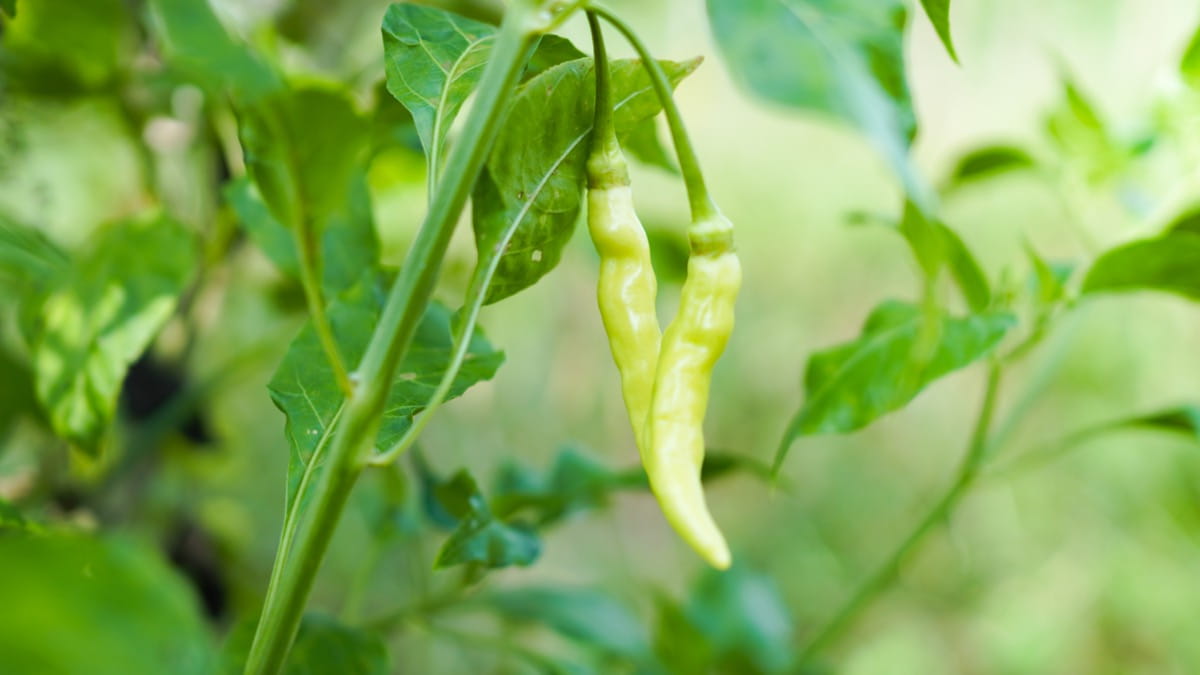
Conclusion
Hybrid chilli varieties have the potential to increase yield compared to traditional open-pollinated varieties significantly. With proper management techniques, a well-managed hybrid chilli farm in India can produce up to 50-60 tonnes per hectare, producing high red and green chillies per acre yield.
- Types of Pesticides Used in Agriculture: A Beginner’s Guide
- Economical Aquaculture: A Guide to Low-Budget Fish Farming
- 15 Common Planting Errors That Can Doom Your Fruit Trees
- How to Make Houseplants Bushy: Effective Tips and Ideas
- Innovative Strategies for Boosting Coconut Pollination and Yield
- Pollination Strategies for Maximum Pumpkin Yield
- The Complete Guide to Chicken Fattening: Strategies for Maximum Growth
- Natural Solutions for Tulip Problems: 100% Effective Remedies for Leaf and Bulb-Related Issues
- Revolutionizing Citrus Preservation: Towards a Healthier, Greener Future
- Natural Solutions for Peony Leaf and Flower Problems: 100% Effective Remedies
- Maximizing Profits with Avocado Contract Farming in India: A Comprehensive Guide
- Natural Solutions for Hydrangea Problems: 100% Effective Remedies for Leaf and Flowers
- The Ultimate Guide to Choosing the Perfect Foliage Friend: Bringing Life Indoors
- From Sunlight to Sustainability: 15 Ways to Use Solar Technology in Agriculture
- The Ultimate Guide to Dong Tao Chicken: Exploring from History to Raising
- The Eco-Friendly Makeover: How to Convert Your Unused Swimming Pool into a Fish Pond
- Mastering the Art of Delaware Chicken Farming: Essentials for Healthy Backyard Flocks
- 20 Best Homemade Fertilizers for Money Plant: DIY Recipes and Application Methods
- How to Craft a Comprehensive Free-Range Chicken Farming Business Plan
- Brighten Your Flock: Raising Easter Egger Chickens for Beauty and Bounty
- How to Optimize Your Poultry Egg Farm Business Plan with These Strategies
- Subsidy for Spirulina Cultivation: How Indian Government Schemes Encouraging Spirulina Farmers
- Ultimate Guide to Raising Dominique Chickens: Breeding, Feeding, Egg-Production, and Care
- Mastering the Art of Raising Jersey Giant Chickens: Care, Feeding, and More
- Ultimate Guide to Raising Legbar Chickens: Breeding, Farming Practices, Diet, Egg-Production
- How to Raise Welsummer Chickens: A Comprehensive Guide for Beginners
- How to Protect Indoor Plants in Winter: A Comprehensive Guide
- Ultimate Guide to Grow Bag Gardening: Tips, Tricks, and Planting Ideas for Urban Gardeners
- Guide to Lotus Cultivation: How to Propagate, Plant, Grow, Care, Cost, and Profit
- Agriculture Drone Subsidy Scheme: Government Kisan Subsidy, License, and How to Apply Online
- Ultimate Guide to Raising Araucana Chickens: Breed Profile, Farming Economics, Diet, and Care
- Bringing Hydroponics to Classroom: Importance, Benefits of Learning for School Students
- Ultimate Guide to Raising Polish Chickens: Breed Profile, Farming Economics, Diet, and Care
- Ultimate Guide to Raising Australorp Chickens: Profile, Farming Economics, Egg Production, Diet, and Care
- Silkie Chicken Farming: Raising Practices, Varieties, Egg Production, Diet, and Care
- Sussex Chicken Farming: Raising Practices, Varieties, Egg Production, Diet and Care